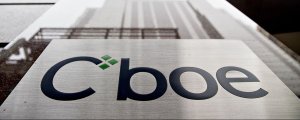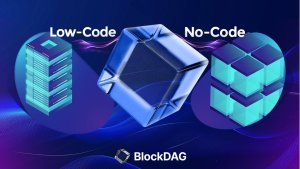A New Gold Standard: Unleashing Gold’s Potential as Premium Collateral
By Anoushka Rayner, Head of Growth Commodities, Paxos.

At around the time the movie Margin Call was released in 2011, clearing houses began accepting gold as collateral – a move driven largely by elevated market volatility and regulatory pressure. Today, as we enter a period of de-dollarisation – or countries seeking to reduce their reliance on the US dollar as a reserve currency – and increased margin calls heap more pressure on firms, the need to post gold as collateral has never been greater.
As is often the case amid periods of heightened macroeconomic uncertainty, investors will look for a diamond in the rough – that safe haven asset offering port in a storm. This is almost always gold, and this time around is no different. Prior to the US passing a bill to raise the debt ceiling, concerns were mounting around the risk of default and Bloomberg data shows that gold remained the number one choice for professional and retail investors looking for safety, with 51.7% and 45.7% saying they would opt for the metal as a means of hedging risk, respectively. To put that in perspective, the second-most popular option was Treasuries, following far behind at 14% and 15.1%.
What’s more, even with yields rising on very short-dated securities, the traditional inverse relationship between gold demand and higher treasury yields is unlikely to reverse gold’s price rise, as much of the demand is driven by central banks hedging against the greenback. Indeed, as gold loiters around $2,000 per troy ounce, it looks as though we’re approaching a new gilded period.
Yet, despite gold being the primary beneficiary of the rocky macroeconomic environment this year, the increased demand for the precious metal has raised more questions than answers. Most notably, why is gold still primarily traded in its physical form? Beyond the obvious logistical problems of transporting, trading, and settling a heavy metal, there is the environmental angle. After all, shifting highly secure gold bullion bars in trucks across the globe is far from environmentally friendly.
For these reasons, when it comes to assets considered cash equivalent, allocated gold has traditionally not been the first port of call. With a c. $700,000 dollars minimum tick size (for London Good Delivery 400oz bars) and the need for the physical to move, gold has not been a practical asset for either initial or variation margin. But this could be about to change, with tokenisation offering an obvious solution.
The integration of blockchain technologies in the gold market has the potential to transform how market participants use the precious metal. Beyond making it much more liquid, tokenisation could solve the age-old struggle to make gold more mobile.
With the greater mobilisation achieved through tokenisation, clearing houses will have more reason to beef their financial ballast with gold – especially amid the pincer pressures of interest rates and surging inflation. As it stands, gold plays an insignificant role in the posting of collateral, making up, on average, only $300-500m of the tens of billions worth of collateral posted in clearing houses – but as market participants manage the inevitable uplift in demand for margin, there’s even more reason to look to a historically stable asset like gold.
Imagine a scenario whereby financial institutions posting collateral through a clearing house, or indeed bi-lateral collateral, were able to retain more of their cash dollars and mobilise gold instead. Not only would this allow market participants to make their cash work harder, but it would also enhance the stability and flexibility of clearing houses – particularly during periods of intense economic stress.
The mobilisation of gold via tokenisation is not going to take off tomorrow. It will only be over the medium to longer term that the macroeconomic environment will catalyse financial institutions to alter their approach. But as firms begin evolving their strategies, those holding digital assets and embracing the use of tokenised gold as a form of collateral will be best placed to reap the rewards of fractional, near real-time, and low-cost digital assets.

Anoushka Rayner is the Head of Growth – Commodities at Paxos. Anoushka has demonstrated history of working in the financial services industry; having accumulated two decades worth industry knowledge, with previous experience at the likes of Cobalt, UBS, and HSBC.
The subject matter and the content of this article are solely the views of the author. FinanceFeeds does not bear any legal responsibility for the content of this article and they do not reflect the viewpoint of FinanceFeeds or its editorial staff.









